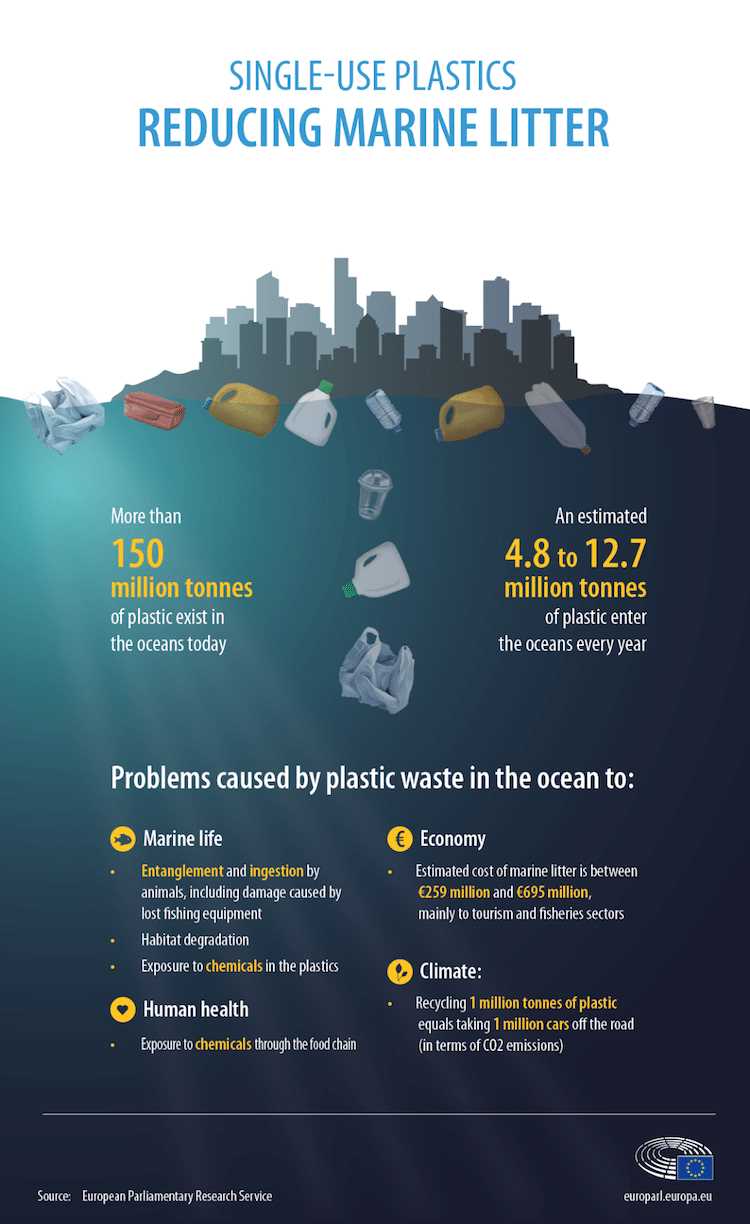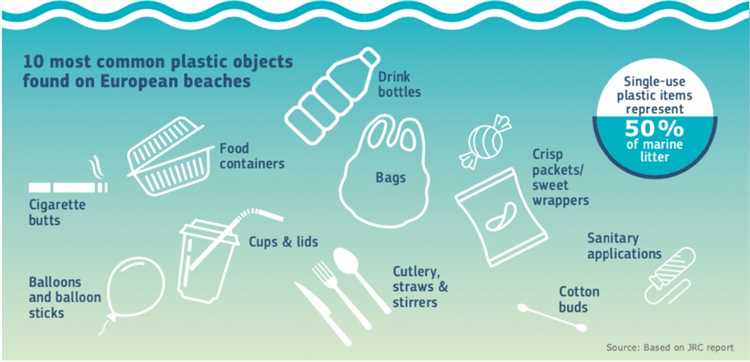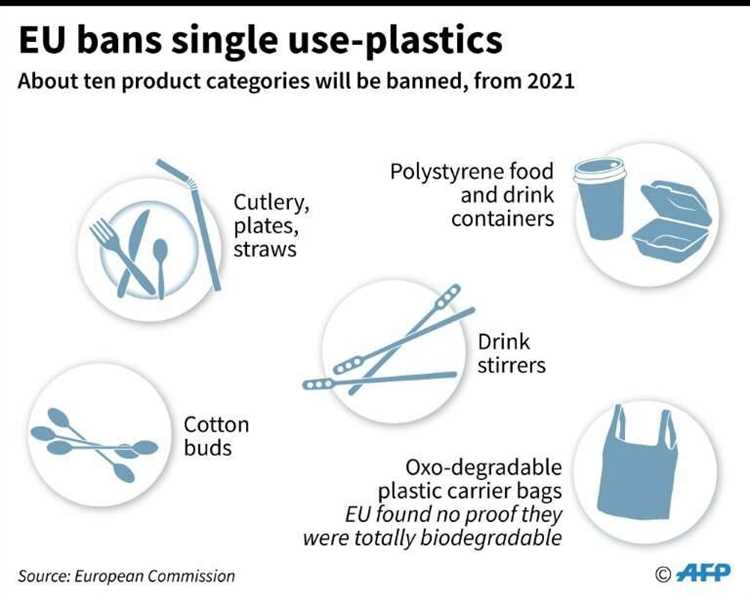In recent years, the issue of single-use plastics and their environmental impact has gained significant attention worldwide. These plastics, including items such as plastic straws, cutlery, and bags, are used once and then discarded, contributing to pollution and harming marine life. Europe has been at the forefront of efforts to address this problem, with several countries taking action to ban or limit the use of single-use plastics.
One of the key developments in this area has been the European Union’s Directive on single-use plastics, which was adopted in 2019. The directive aims to reduce the impact of certain single-use plastic products on the environment and promote the transition to a more circular economy. It sets clear targets for recycling and reduction of single-use plastics, as well as measures to raise awareness and promote more sustainable alternatives.
Many European countries have also implemented their own national measures to tackle single-use plastics. For example, France became the first country in the world to ban plastic plates, cups, and cutlery in 2016. Other countries, such as Italy, Spain, and the United Kingdom, have implemented similar bans or restrictions on certain single-use plastic products. These measures are part of a wider push in Europe to reduce plastic waste and promote more sustainable consumption patterns.
While progress has been made, there is still work to be done to effectively address the issue of single-use plastics in Europe. Implementation and enforcement of the bans and restrictions vary across countries, and there is a need for more comprehensive and coordinated action at the European level. However, the efforts being made by Europe to tackle single-use plastics are an important step towards reducing plastic waste and protecting the environment for future generations.
- European Union’s Efforts to Reduce Plastic Pollution
- The Growing Concern of Single-Use Plastics
- EU Directive on Single-Use Plastics
- National Initiatives Across Europe
- Challenges and Progress in Implementing the Ban
- Question-answer:
- What is single-use plastic?
- Why is single-use plastic a problem?
- What actions has Europe taken to ban single-use plastics?
- How effective are these actions in reducing single-use plastic waste?
European Union’s Efforts to Reduce Plastic Pollution
The European Union has been taking proactive steps to reduce plastic pollution in its member countries. Recognizing the negative impact of single-use plastics on the environment, the European Commission proposed the Single-Use Plastics Directive in 2018.
This directive aims to ban several single-use plastic products, including straws, cutlery, plates, and cotton buds, by 2021. It also sets recycling targets for other plastic items, such as beverage bottles and fishing gear, to ensure they are properly managed and recycled.
In addition to banning specific products, the EU is also working towards promoting the use of more sustainable alternatives. The directive encourages the development and adoption of innovative packaging designs that are eco-friendly and easily recyclable.
Furthermore, the European Union is focusing on improving waste management systems to prevent plastic pollution. It aims to establish extended producer responsibility schemes, where manufacturers are responsible for the collection and recycling of their products.
The EU’s efforts to reduce plastic pollution extend beyond its borders. The European Union supports global agreements and partnerships to combat marine litter and promote a circular economy. It actively participates in international negotiations and works with other countries to address the global plastic waste issue.
These initiatives reflect the European Union’s commitment to tackle plastic pollution and protect the environment. By implementing bans, promoting sustainable alternatives, and improving waste management systems, the EU is leading the way in reducing single-use plastics and preserving our planet for future generations.
The Growing Concern of Single-Use Plastics

In recent years, there has been a growing concern about the environmental impact of single-use plastics. These are products that are used once and then discarded, adding to the immense amount of waste that accumulates in landfills and oceans.
The main issue with single-use plastics is their durability. Although they are designed to be used only once, they can take hundreds of years to decompose. As a result, they pollute the environment and pose a threat to wildlife and ecosystems.
Another problem with single-use plastics is their production process. The manufacturing of these products requires significant amounts of fossil fuels, contributing to greenhouse gas emissions and climate change. This further emphasizes the need to find alternative solutions and reduce our dependence on single-use plastics.
In response to these concerns, many countries and regions, including Europe, are taking action to ban or reduce the use of single-use plastics. For example, the European Union has proposed a ban on certain single-use plastics, such as straws, cotton buds, and stirrers. This ban aims to reduce plastic waste and promote the use of more sustainable alternatives.
Furthermore, awareness campaigns and educational programs are being implemented to educate the public about the negative effects of single-use plastics and encourage behavior change. Individuals are being encouraged to reduce their consumption of single-use plastics and opt for reusable alternatives instead.
Overall, the growing concern of single-use plastics has prompted action at both governmental and individual levels. The implementation of bans, along with educational initiatives, is essential in addressing this issue and working towards a more sustainable future.
EU Directive on Single-Use Plastics

The European Union has taken significant steps to reduce single-use plastics and combat plastic pollution with the introduction of the EU Directive on Single-Use Plastics. This directive aims to tackle the environmental impact of certain single-use plastic products by reducing their consumption and promoting more sustainable alternatives.
| Key Measures | Description |
|---|---|
| Ban on certain plastic products | The directive prohibits the sale and use of several single-use plastic items for which alternatives already exist, including plastic cutlery, plates, straws, cotton bud sticks, and balloon sticks. |
| Extended producer responsibility | Producers of plastic packaging are now responsible for covering the costs of waste management and clean-up, as well as raising awareness about the negative effects of littering. This aims to encourage manufacturers to design packaging that is easier to recycle and decreases overall waste. |
| Collection and recycling targets | The directive sets ambitious targets for member states to collect and recycle a certain percentage of plastic bottles, beverage containers, fishing gear, and other plastic waste, aiming to ensure a more circular economy and minimize plastic pollution. |
| Labelling requirements | Manufacturers and retailers are now required to label certain single-use plastic products with clear and standardized information on proper disposal and the negative impact of plastic pollution on the environment. |
| Public awareness campaigns | Member states are encouraged to run public campaigns to educate and raise awareness on the consequences of single-use plastics and promote sustainable alternatives. These campaigns aim to change consumer behaviors and reduce plastic waste. |
The EU Directive on Single-Use Plastics represents a significant effort by the European Union to tackle the problem of plastic pollution. By implementing these measures, the EU aims to reduce marine litter, protect ecosystems, and transition towards a more sustainable and circular economy.
National Initiatives Across Europe

Many countries in Europe have taken significant steps to address the issue of single-use plastics. These initiatives showcase the commitment of European nations towards reducing plastic waste and promoting sustainability.
- France: In 2016, France became the first country in the world to ban plastic plates, cups, and utensils. The law went into effect in 2020, promoting the use of alternative biodegradable materials.
- Germany: Germany has introduced a voluntary pledge system called the “Plastic Pact” in which companies commit to reducing and recycling plastics. This initiative aims to encourage collaboration between government, industry, and civil society.
- Italy: Italy has implemented a ban on single-use plastics, including cotton buds, straws, and plates, as well as a fee on plastic bags. The country has also introduced incentives for the development and use of biodegradable materials.
- Spain: Spain has adopted a national strategy for the circular economy that includes measures to reduce plastic waste and promote recycling. The country has also implemented a ban on certain single-use plastic items, such as bags and cutlery.
- United Kingdom: The UK government has introduced a ban on plastic straws, stirrers, and cotton buds, as well as a plastic bag fee. The country has also set targets to eliminate avoidable plastic waste by 2042 and aims to introduce a deposit return scheme for plastic bottles.
These national initiatives highlight the collective efforts being made across Europe to tackle the issue of single-use plastics. By implementing bans, fees, and promoting alternative materials, these countries are leading the way in creating a more sustainable future.
Challenges and Progress in Implementing the Ban
While Europe has made significant progress in taking action to ban single-use plastics, there are still challenges that need to be addressed in implementing the ban. One of the main challenges is finding alternatives for single-use plastics that are both efficient and environmentally friendly.
Many products, such as plastic straws and stirrers, have become entrenched in our daily lives, making it difficult for individuals and industries to easily transition to using alternatives. This has led to resistance and reluctance to change from both consumers and manufacturers.
Another challenge is the lack of widespread awareness and understanding of the negative impacts of single-use plastics on the environment. To successfully implement the ban, it is important to educate the public on the importance of reducing plastic waste and the availability of alternative options.
Furthermore, enforcing the ban and ensuring compliance is a significant challenge. It requires cooperation and coordination among various stakeholders, including governments, businesses, and consumers. Without strict enforcement and penalties for non-compliance, the ban may not be as effective as intended.
Despite these challenges, progress has been made in implementing the ban. Several EU member states have already introduced legislation to ban or reduce the use of single-use plastics, and many businesses have voluntarily taken steps to eliminate or reduce plastic waste.
Additionally, there has been an increase in research and development for alternative materials and packaging designs that are more sustainable. Many companies are investing in innovation to create biodegradable or compostable alternatives to single-use plastics.
In conclusion, while there are challenges in implementing the ban on single-use plastics in Europe, progress is being made. Continued efforts to find alternatives, raise awareness, and enforce the ban will be crucial in successfully reducing plastic waste and protecting the environment.
Question-answer:
What is single-use plastic?
Single-use plastics are disposable items that are used once and then thrown away. Examples include plastic bags, straws, and food packaging.
Why is single-use plastic a problem?
Single-use plastic is a problem because it is not easily recycled and often ends up in landfills or as litter in oceans and waterways. It can take hundreds of years to break down, causing harm to wildlife and the environment.
What actions has Europe taken to ban single-use plastics?
Europe has taken various actions to ban single-use plastics. For example, the European Parliament has approved a ban on single-use plastic items such as cutlery, plates, straws, and cotton buds by 2021. Additionally, EU member states have agreed to reduce the consumption of single-use plastic bags and introduce measures to tackle littering from these items.
How effective are these actions in reducing single-use plastic waste?
These actions are a step in the right direction to reduce single-use plastic waste. By banning certain items and promoting alternatives, it will encourage individuals and businesses to find more sustainable options. However, it will take time to see the full impact of these measures and there is still more work to be done to tackle the issue of single-use plastics.
